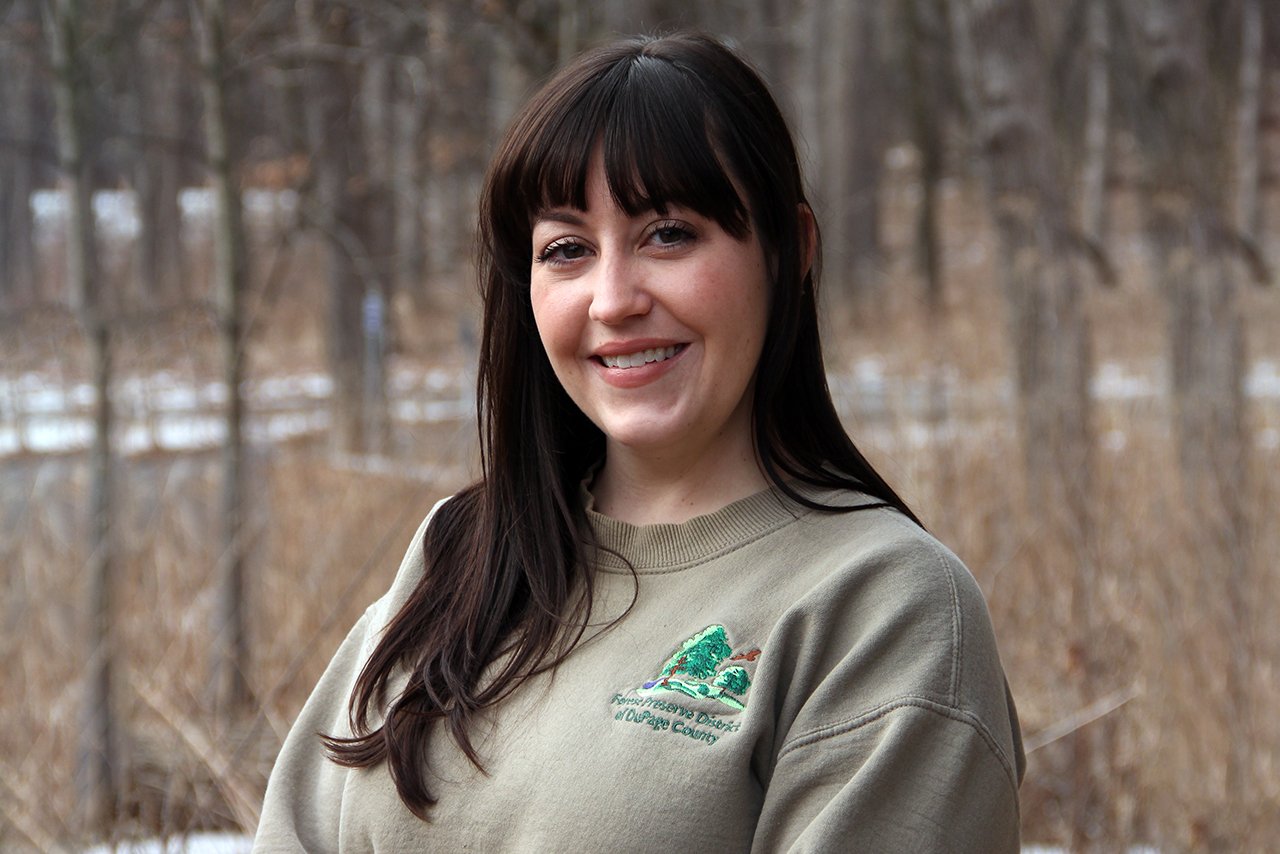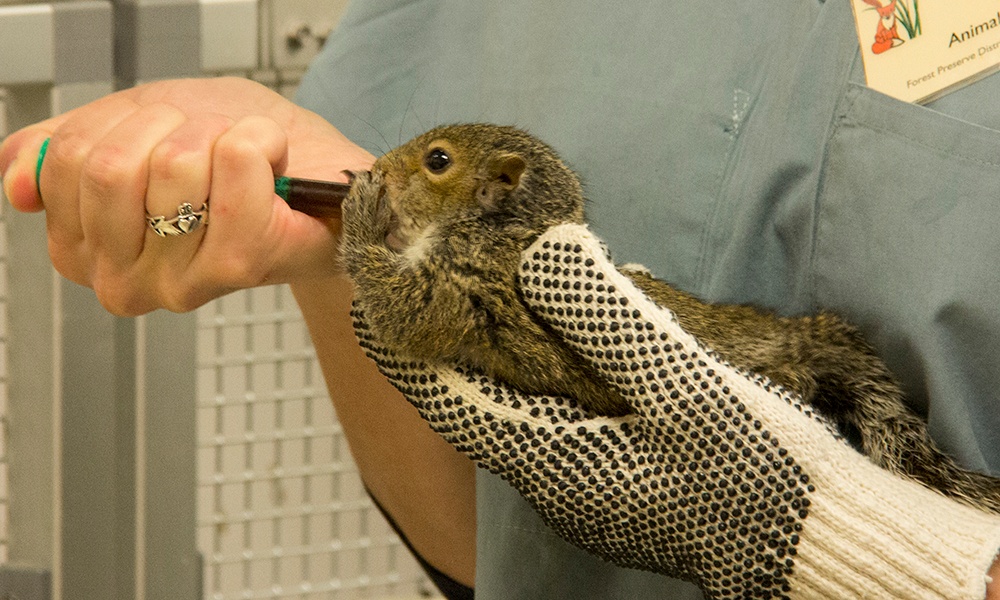
Every facility that cares for animals has to make tough decisions all the time: What type of animals should they treat? How many? Do they have the staff and skill to treat them? How should already limited resources be spread fairly among all the animals in need of help?
If no boundaries are established, the results are overcrowded, inhumane, and unsanitary conditions, which defeats the purpose of an animal rescue group. Resources become spread so thin that no individual gets the attention and care they need and animals suffer. This is why we set capacity limits.
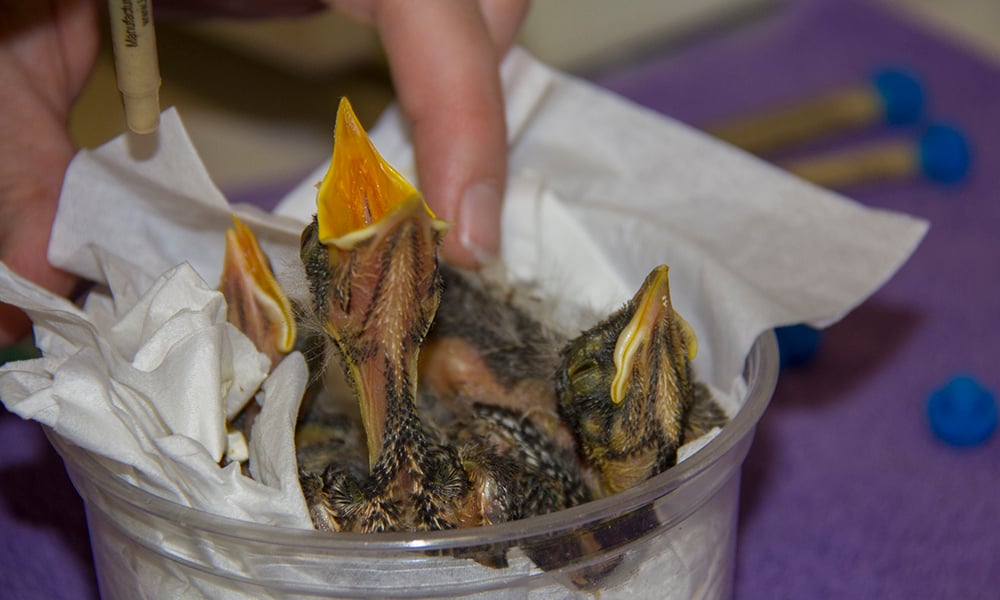
Baby birds are treated at Willowbrook Wildlife Center.
What is Capacity?
Capacity limits are the number of individuals we can safely and humanely care for within the boundaries of our resources. At Wiillowbrook Wildlife Center, it’s determined by a number of factors that may include species, condition, and age.
Our capacity limit is further diminished because of the COVID-19 pandemic. To adhere to CDC guidelines on social distancing and keep our staff, their families and our community safe, we’re working at 25% of our normal staffing levels.
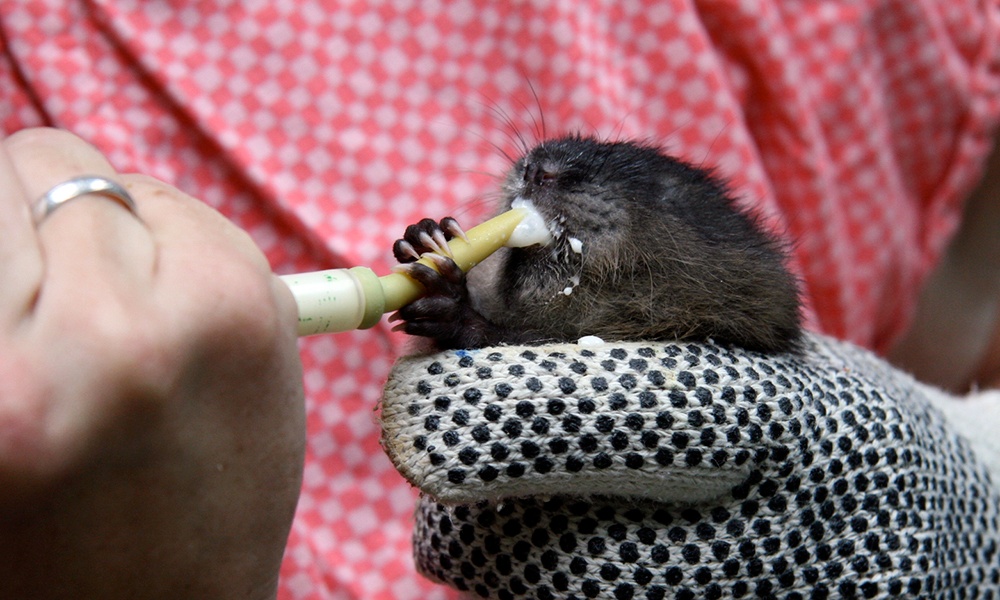
A baby mink is fed through a straw.
Different Animals, Different Needs
Willowbrook treats a large number and variety of wild animals each year. Each has different care requirements — space, food, time, medical needs, etc. An otherwise healthy orphaned mallard is a much easier patient to treat than an orphaned raccoon. Mallard ducklings at hatching are mobile and able to feed themselves. They need a warm and safe place to group up, a nutritious food supply and clean water. It’s a fairly hands-off process from the rehabilitation aspect.
Space Limits
Every Willowbrook animal enclosure has an identified capacity. For example, one small enclosure in our nursery can either hold four squirrels or six opossums. There are periods in the spring and summer where every single one of those cages is at its max. That’s when we have to make the call.
For the record, Willowbrook staff really dislikes making the call that we are at capacity for any type of animal. It means it will be that much harder for the animal to find the help it needs. It’s already slim pickings for licensed wildlife rehabilitators in the state of Illinois. It is expensive, exhausting, and thankless work.
We are grateful to have the facility, staff, and funding to allow us to admit thousands of animals every year. But, that facility, staff, and funding do not grow as the need for help for wild animals does.
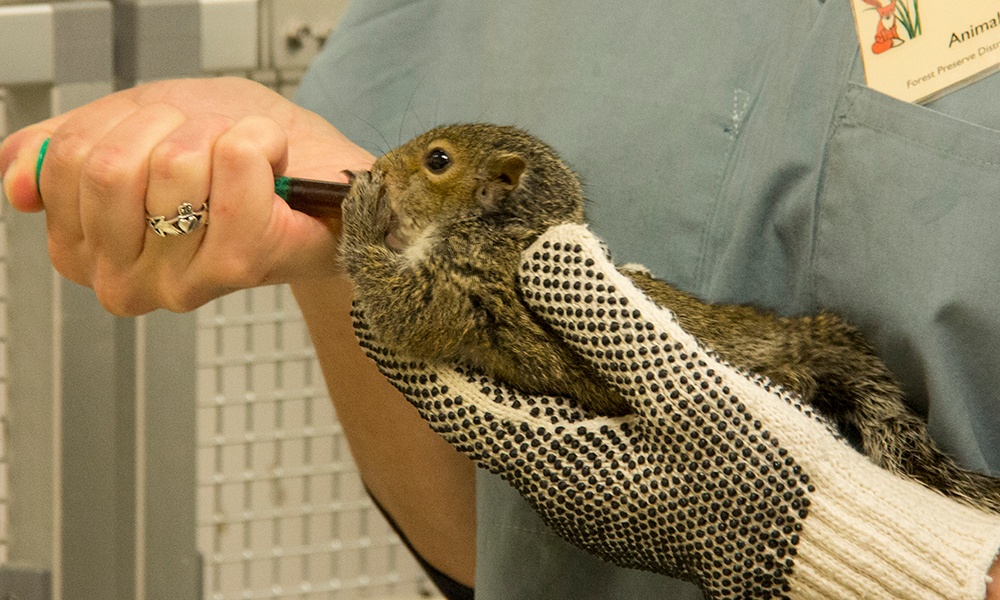
A baby squirrel is held gently during feeding time.
What You Can Do
A secondary, but no less important mission of ours is to educate the community about our wild neighbors. Hopefully this helps decrease the well-intentioned but unnecessary kidnappings or evictions of wild families, thus reducing the number of “orphans” in need of our services.
We strongly encourage animal rescuers to reach out before acting to find out if an animal needs help, or if that valuable spot can be saved for a patient that truly needs us. We also do what we can do help rescuers find the appropriate resources for animals needing treatment if we are unable to do so ourselves.
We acknowledge it is a frustrating and disappointing position for rescuers to be put in. As tough as it is to turn away wildlife in need, understand that we are giving each animal already in our care the best possible chance for survival. And that is Willowbrook’s goal and bottom line. It’s what we’re here for.
Links to more information:
Illinois Wildlife Rehabilitators (PDF)
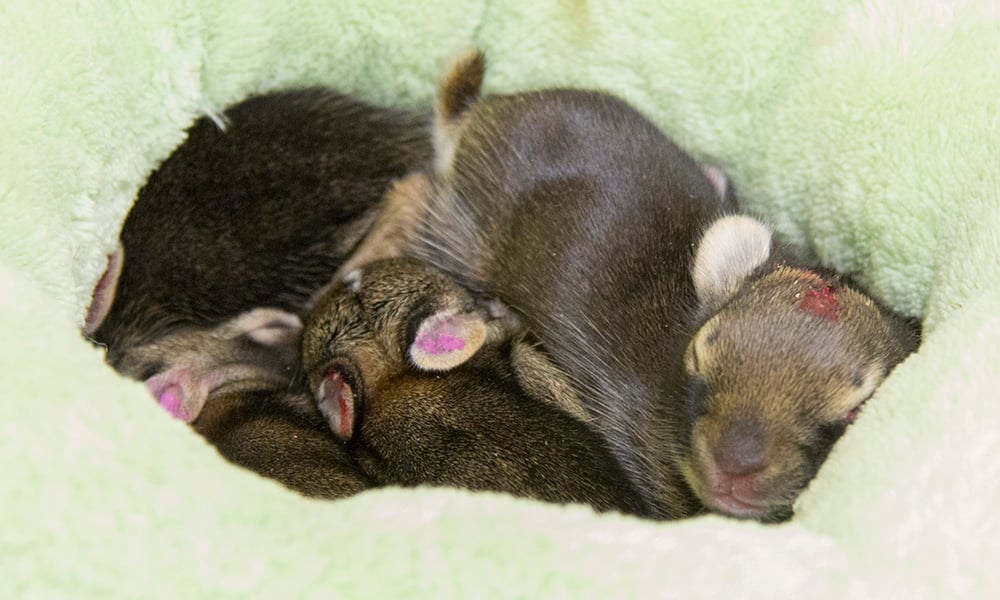
Baby bunnies rest at Willowbrook, where capacity issues can be a concern.
Stephanie Touzalin
